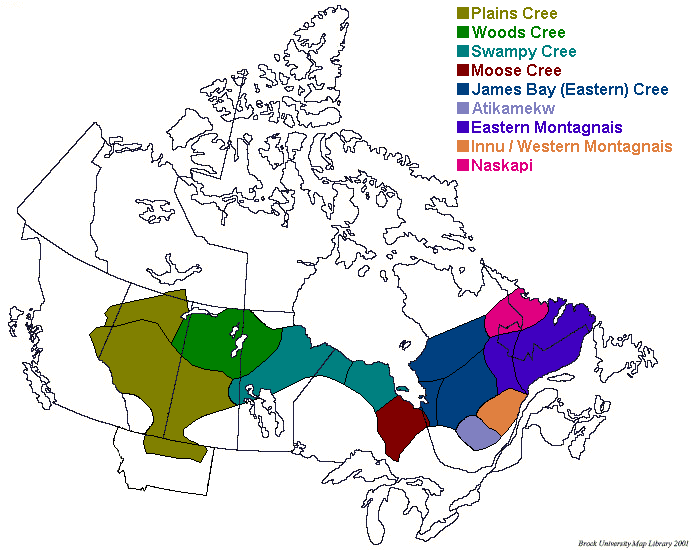|
Mannegishi
The Mannegishi (singular the same) are a race of trickster people in Cree folklore. They are probably related to the Memegwesi of Ojibwa The Ojibwe (; syll.: ᐅᒋᐺ; plural: ''Ojibweg'' ᐅᒋᐺᒃ) are an Anishinaabe people whose homeland (''Ojibwewaki'' ᐅᒋᐺᐘᑭ) covers much of the Great Lakes region and the northern plains, extending into the subarctic and thro ... origin. References Cree legendary creatures Mythological tricksters {{NorthAm-myth-stub ... [...More Info...] [...Related Items...] OR: [Wikipedia] [Google] [Baidu] |
Trickster
In mythology and the study of folklore and religion, a trickster is a character in a story (god, goddess, spirit, human or anthropomorphisation) who exhibits a great degree of intellect or secret knowledge and uses it to play tricks or otherwise disobey normal rules and defy conventional behavior. Mythology Tricksters, as archetypal characters, appear in the myths of many different cultures. Lewis Hyde describes the trickster as a "boundary-crosser".Hyde, Lewis. ''Trickster Makes This World: Mischief, Myth, and Art''. New York: Farrar, Straus and Giroux, 1998. The trickster crosses and often breaks both physical and societal rules: Tricksters "violate principles of social and natural order, playfully disrupting normal life and then re-establishing it on a new basis." Often, this bending and breaking of rules takes the form of tricks and thievery. Tricksters can be cunning or foolish or both. The trickster openly questions, disrupts and mocks authority. Many cultures have ta ... [...More Info...] [...Related Items...] OR: [Wikipedia] [Google] [Baidu] |
Cree
The Cree, or nehinaw (, ), are a Indigenous peoples of the Americas, North American Indigenous people, numbering more than 350,000 in Canada, where they form one of the country's largest First Nations in Canada, First Nations. They live primarily to the north and west of Lake Superior in the Provinces and territories of Canada, provinces of Alberta, Labrador, Manitoba, the Northwest Territories, Ontario, and Saskatchewan. Another roughly 27,000 live in Quebec. In the United States, the Cree, historically, lived from Lake Superior westward. Today, they live mostly in Montana, where they share Rocky Boy's Indian Reservation with Ojibwe (Chippewa) people. A documented westward migration, over time, has been strongly associated with their roles as traders and hunters in the North American fur trade. Sub-groups and geography The Cree are generally divided into eight groups based on dialect and region. These divisions do not necessarily represent ethnic subdivisions within th ... [...More Info...] [...Related Items...] OR: [Wikipedia] [Google] [Baidu] |
Folklore
Folklore is the body of expressive culture shared by a particular group of people, culture or subculture. This includes oral traditions such as Narrative, tales, myths, legends, proverbs, Poetry, poems, jokes, and other oral traditions. This also includes material culture, such as traditional building styles common to the group. Folklore also encompasses customary lore, taking actions for folk beliefs, including folk religion, and the forms and rituals of celebrations such as Christmas, weddings, folk dances, and Rite of passage, initiation rites. Each one of these, either singly or in combination, is considered a Cultural artifact, folklore artifact or Cultural expressions, traditional cultural expression. Just as essential as the form, folklore also encompasses the transmission of these artifacts from one region to another or from one generation to the next. Folklore is not something one can typically gain from a formal school curriculum or study in the fine arts. Instead, thes ... [...More Info...] [...Related Items...] OR: [Wikipedia] [Google] [Baidu] |
Ojibwa
The Ojibwe (; syll.: ᐅᒋᐺ; plural: ''Ojibweg'' ᐅᒋᐺᒃ) are an Anishinaabe people whose homeland (''Ojibwewaki'' ᐅᒋᐺᐘᑭ) covers much of the Great Lakes region and the northern plains, extending into the subarctic and throughout the northeastern woodlands. The Ojibwe, being Indigenous peoples of the Northeastern Woodlands and of the subarctic, are known by several names, including Ojibway or Chippewa. As a large ethnic group, several distinct nations also consider themselves Ojibwe, including the Saulteaux, Nipissings, and Oji-Cree. According to the U.S. census, Ojibwe people are one of the largest tribal populations among Native American peoples in the U.S. In Canada, they are the second-largest First Nations population, surpassed only by the Cree. They are one of the most numerous Indigenous peoples north of the Rio Grande. The Ojibwe population is approximately 320,000, with 170,742 living in the U.S. and approximately 160,000 in Canada. In the U.S. ... [...More Info...] [...Related Items...] OR: [Wikipedia] [Google] [Baidu] |
Cree Legendary Creatures
The Cree, or nehinaw (, ), are a North American Indigenous people, numbering more than 350,000 in Canada, where they form one of the country's largest First Nations. They live primarily to the north and west of Lake Superior in the provinces of Alberta, Labrador, Manitoba, the Northwest Territories, Ontario, and Saskatchewan. Another roughly 27,000 live in Quebec. In the United States, the Cree, historically, lived from Lake Superior westward. Today, they live mostly in Montana, where they share Rocky Boy's Indian Reservation with Ojibwe (Chippewa) people. A documented westward migration, over time, has been strongly associated with their roles as traders and hunters in the North American fur trade. Sub-groups and geography The Cree are generally divided into eight groups based on dialect and region. These divisions do not necessarily represent ethnic subdivisions within the larger ethnic group: * ''Naskapi'' and '' Montagnais'' (together known as the ''Innu'') are in ... [...More Info...] [...Related Items...] OR: [Wikipedia] [Google] [Baidu] |



